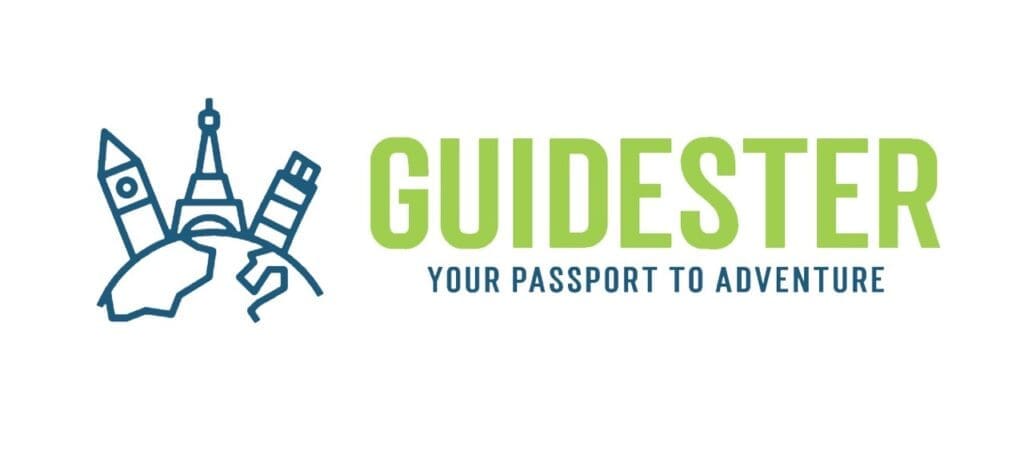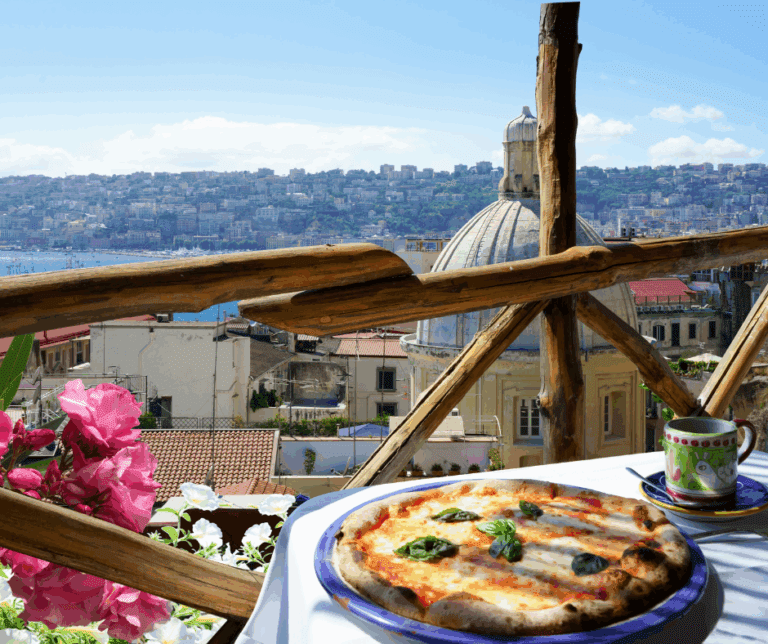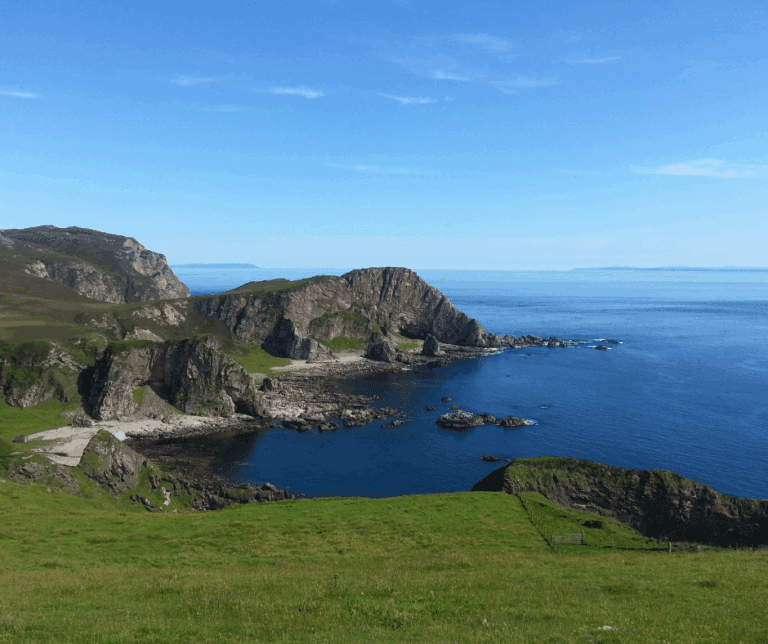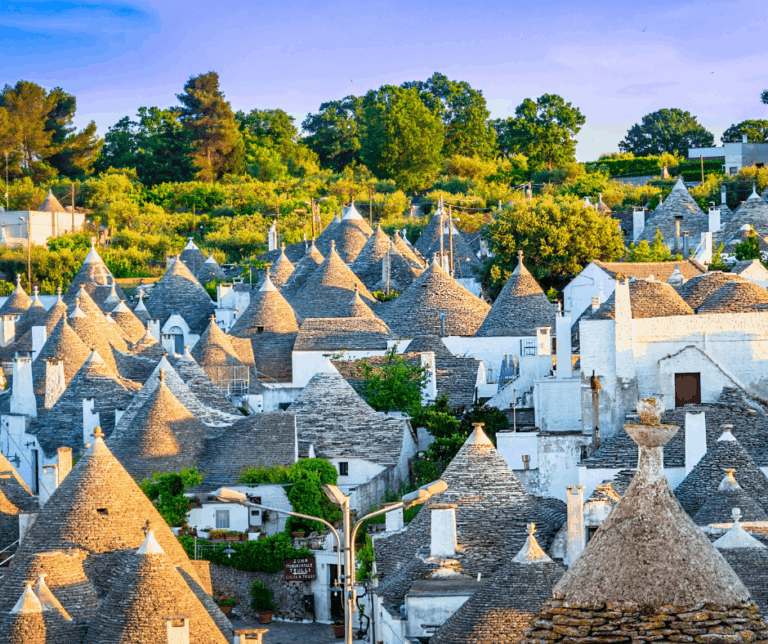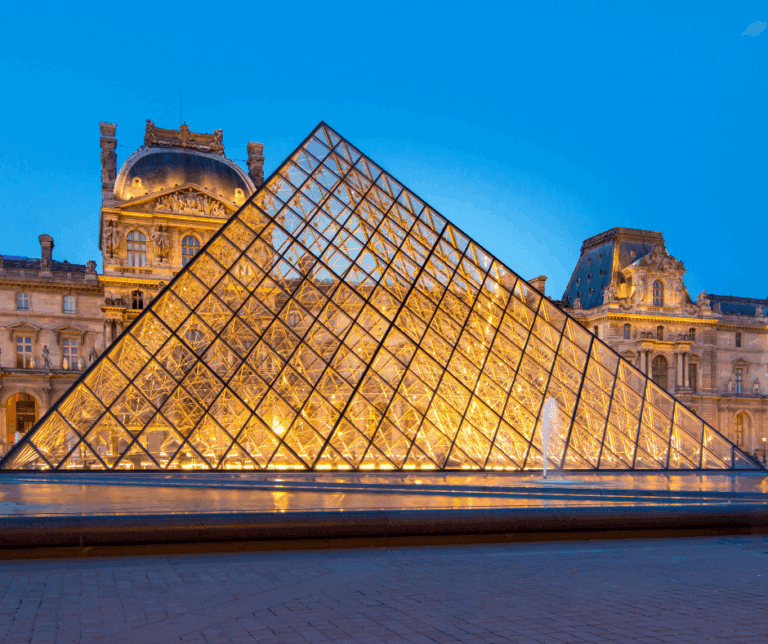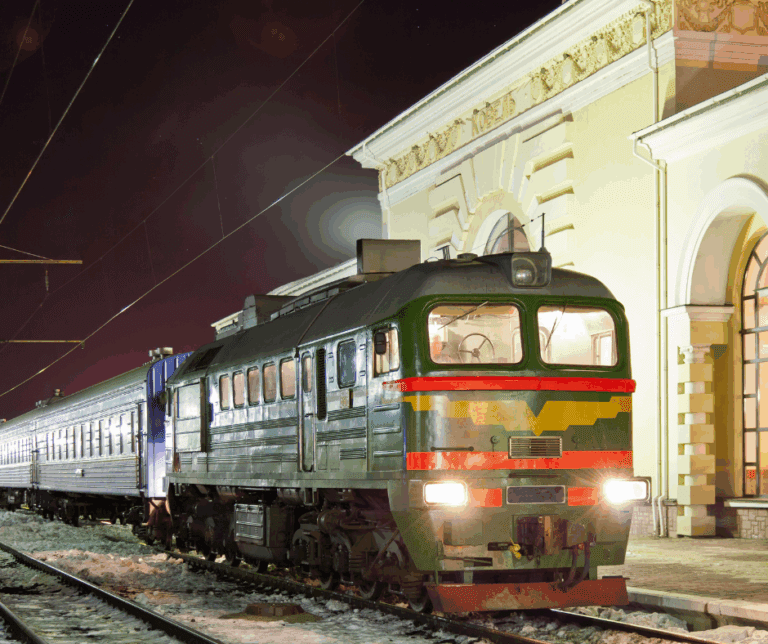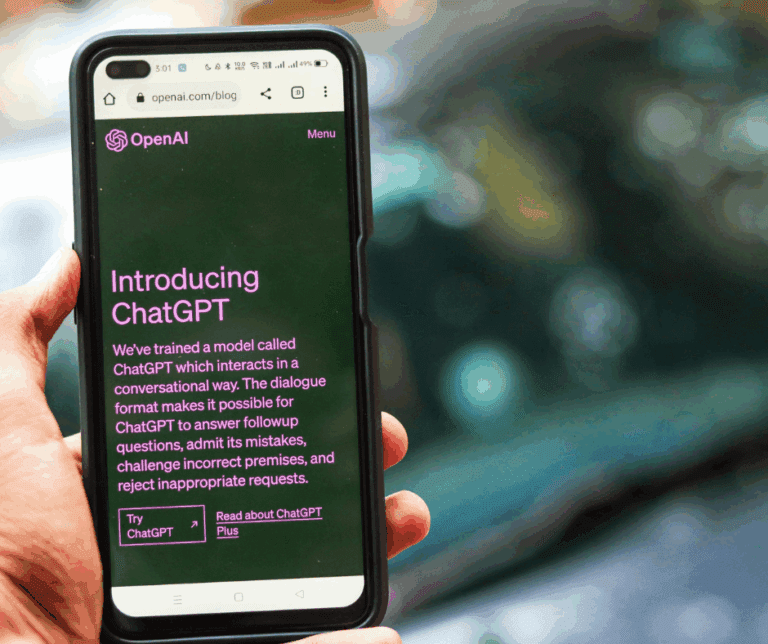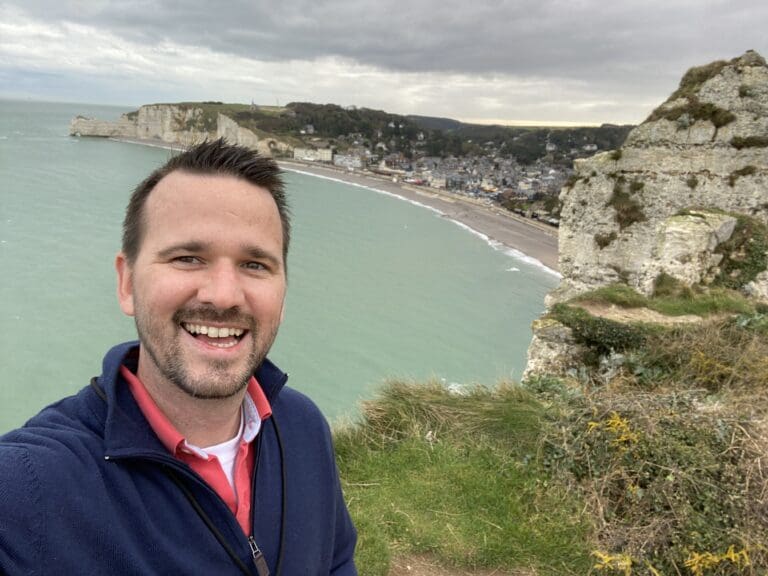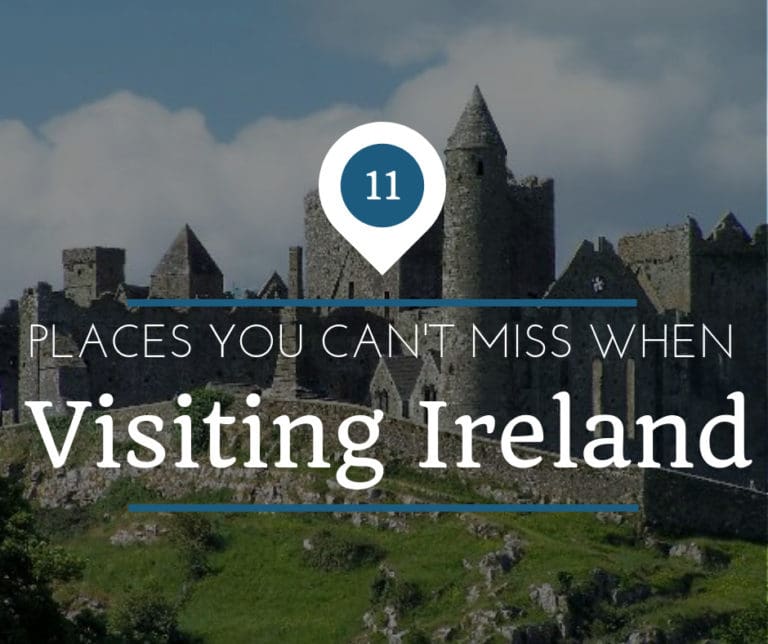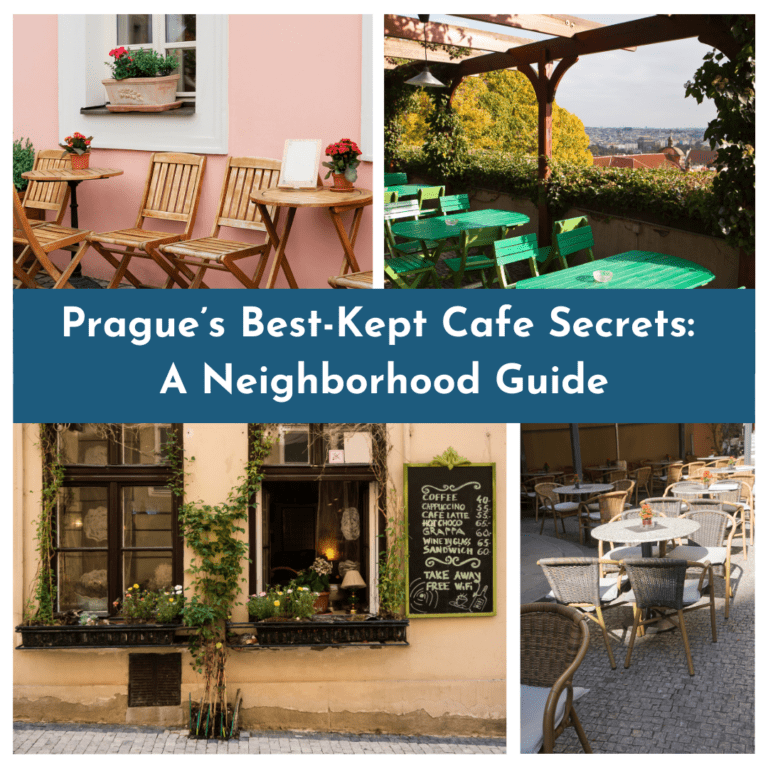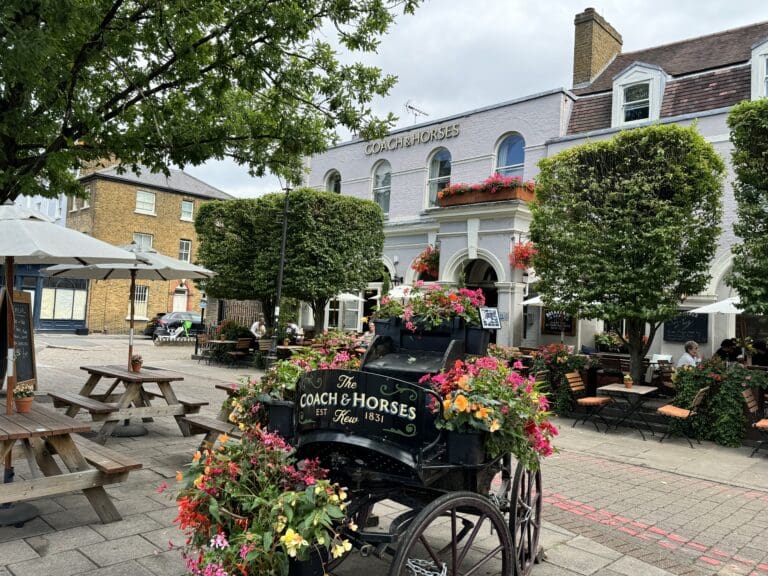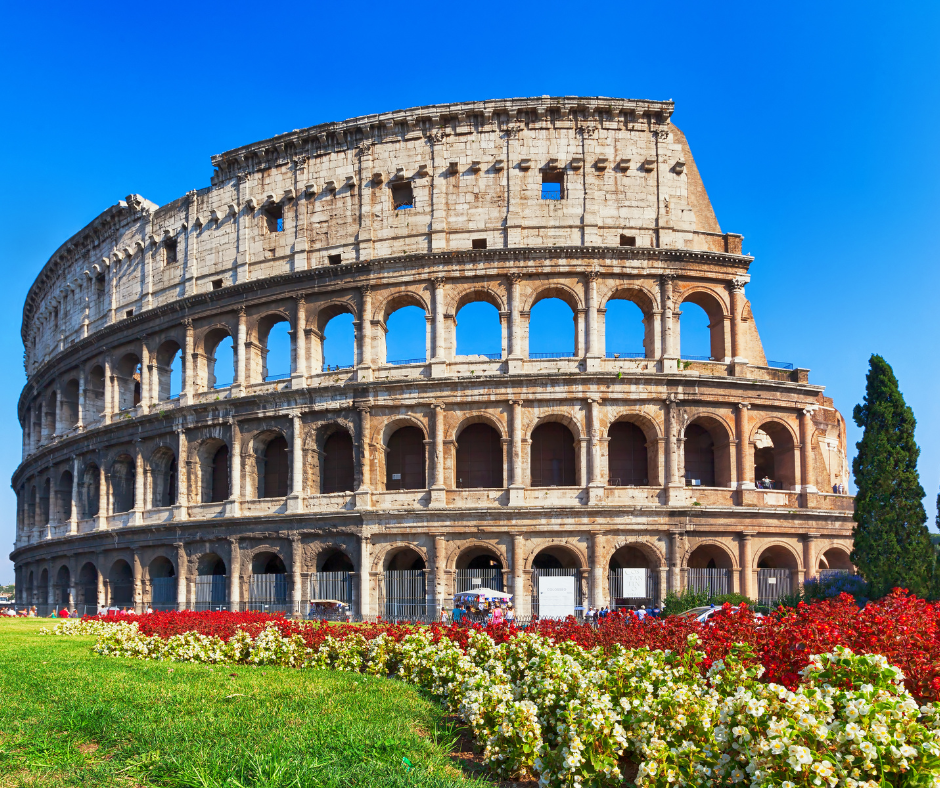
The midday sun hits the warm stone beneath your feet as you approach the towering Colosseum, its arches rising like a monument to Roman ambition. The air smells faintly of dust and roasted chestnuts from a nearby vendor—a reminder that history and modern Rome intertwine at every step.
This visitors guide offers practical tips, historical highlights, and expert suggestions to help you experience these legendary sites fully—starting with how to best use your joint entry ticket.
💡 Check out our complete guide: Rome Travel Tips for First-Timers for advice on best things to see and do, getting around, cultural tips, and how to make the most of your stay.
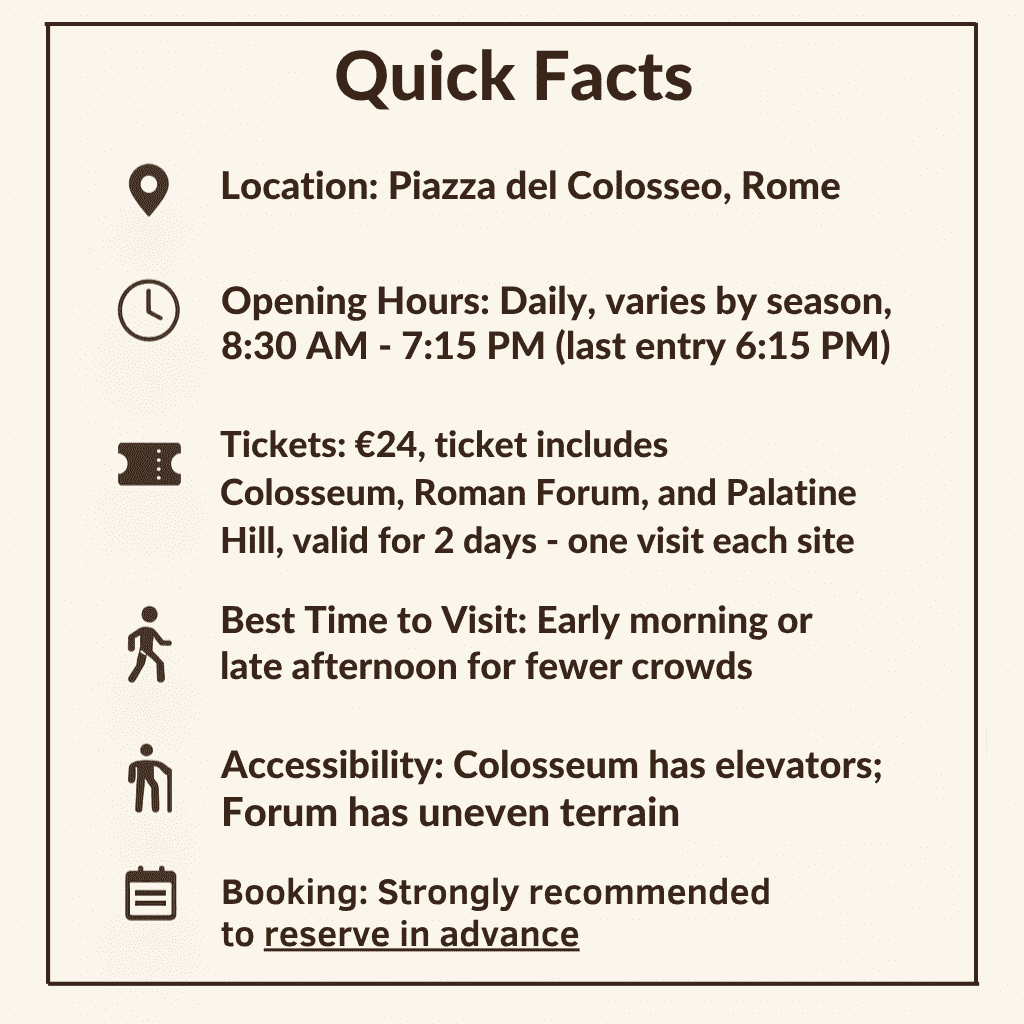
What Are the Colosseum and Roman Forum?
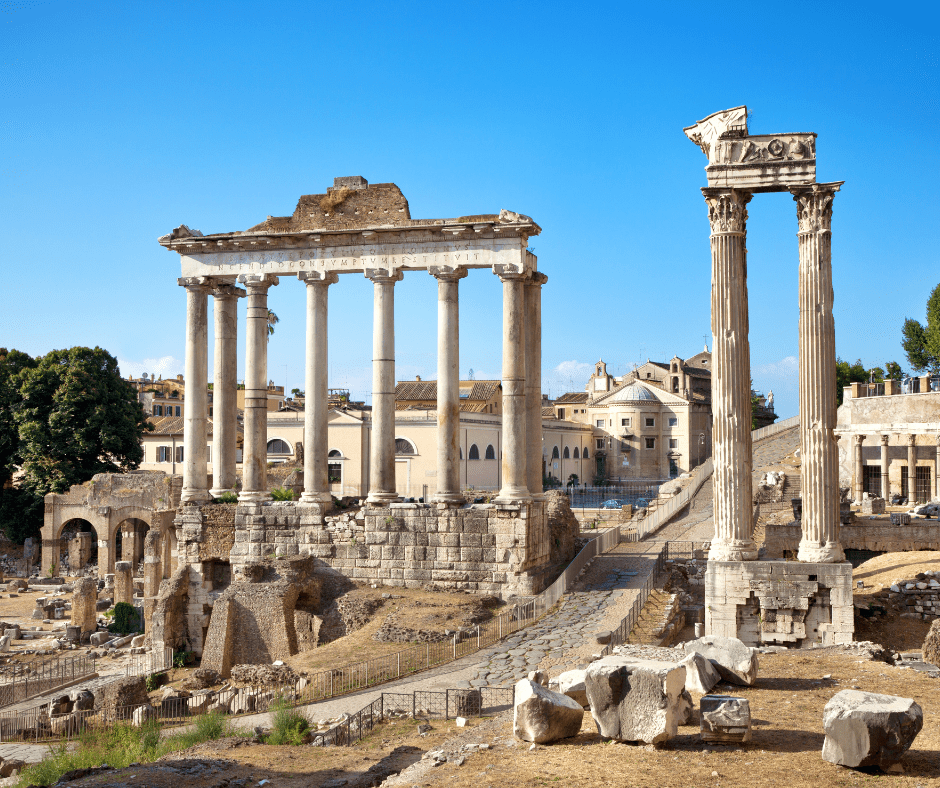
The Colosseum, or Flavian Amphitheatre, was commissioned by Emperor Vespasian around 70 AD and opened by his son Titus in 80 AD.
Built where Nero’s extravagant palace once sprawled, the Colosseum was both an architectural marvel and a political statement—a place where emperors offered spectacles to unite the masses.
Blood spilled onto its sand floor while crowds roared, and exotic animals from across the empire met their fate beneath its stone arches.
At its peak, it could hold up to 80,000 spectators and featured ingenious engineering like elevators, trapdoors, and even floodable floors for mock naval battles.
Though damaged by earthquakes and stone looters, its arches and structure still embody the scale and ambition of imperial Rome.
Nearby, the Roman Forum served as the city’s political, religious, and commercial core for centuries. Once a marshland, it became the setting for markets, public speeches, triumphal processions, and temples that reflected Rome’s power and devotion.
Here you’ll wander between cracked marble columns, temple ruins, and weather-worn arches, where tufts of grass now grow and birds nest.
Centuries ago, this was the beating heart of empire—voices debating in the Curia Julia, merchants haggling in the marketplace, priests offering sacrifices in the shadows of grand temples..
Together, these sites tell the intertwined story of Rome’s grandeur, daily life, and enduring legacy.
Top Things to See at the Colosseum
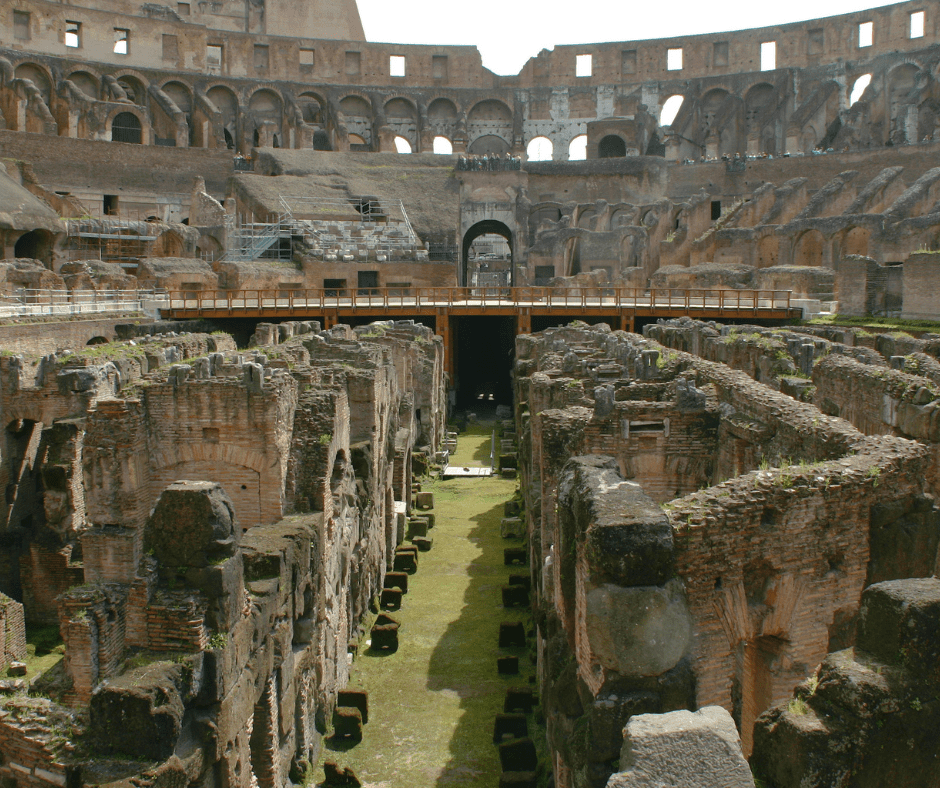
- Arena Floor – Walk the reconstructed floor where gladiators fought. Some tours include exclusive access.
- Hypogeum – A maze of underground tunnels that housed animals, props, and gladiators.
- Upper Tiers – Climb higher for sweeping views of the Colosseum interior and beyond.
- Arch of Constantine – Right next door, this triumphal arch commemorates Constantine’s victory in 312 AD.
💡 Experience Tip: Book a skip-the-line guided tour or VR experience for deeper insights and smoother navigation.
Top Things to See at the Roman Forum
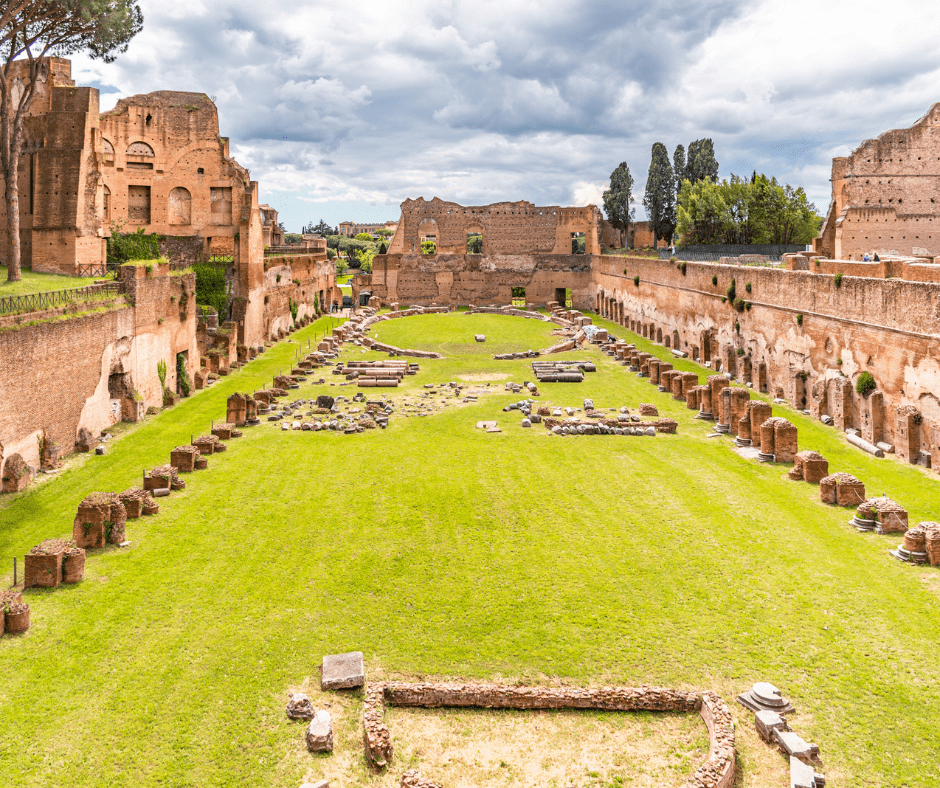
- Temple of Saturn – One of Rome’s oldest temples, with dramatic columns still standing.
- Arch of Titus – A well-preserved arch depicting the conquest of Jerusalem.
- Curia Julia (Senate House) – The site of intense political decision-making.
- House of the Vestal Virgins – Explore the remains of this sacred female order.
- Palatine Hill – Overlook the Forum and see remains of ancient imperial palaces.
💡 Experience Tip: Start at the Colosseum and follow the path through the Forum to Palatine Hill for a logical flow and less backtracking.
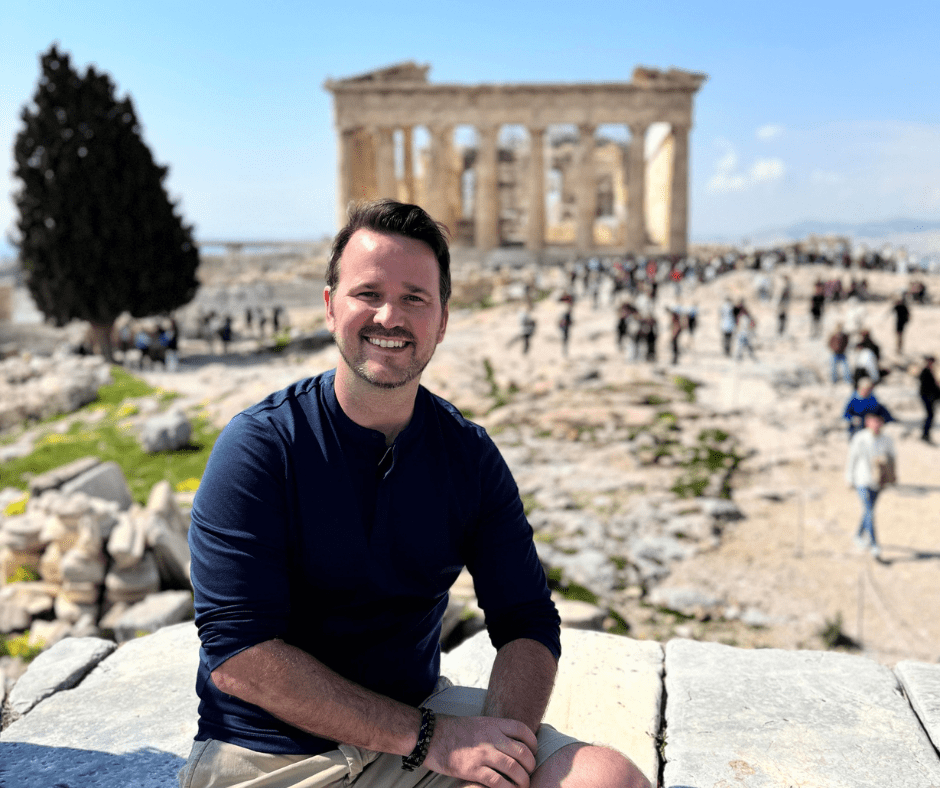
Planning a Trip to Europe?
We can help create your perfect itinerary!
- Worried you'll miss the hidden gems?
- How long should you stay in each place?
- Should you rent a car, train it, or both?
Getting Around
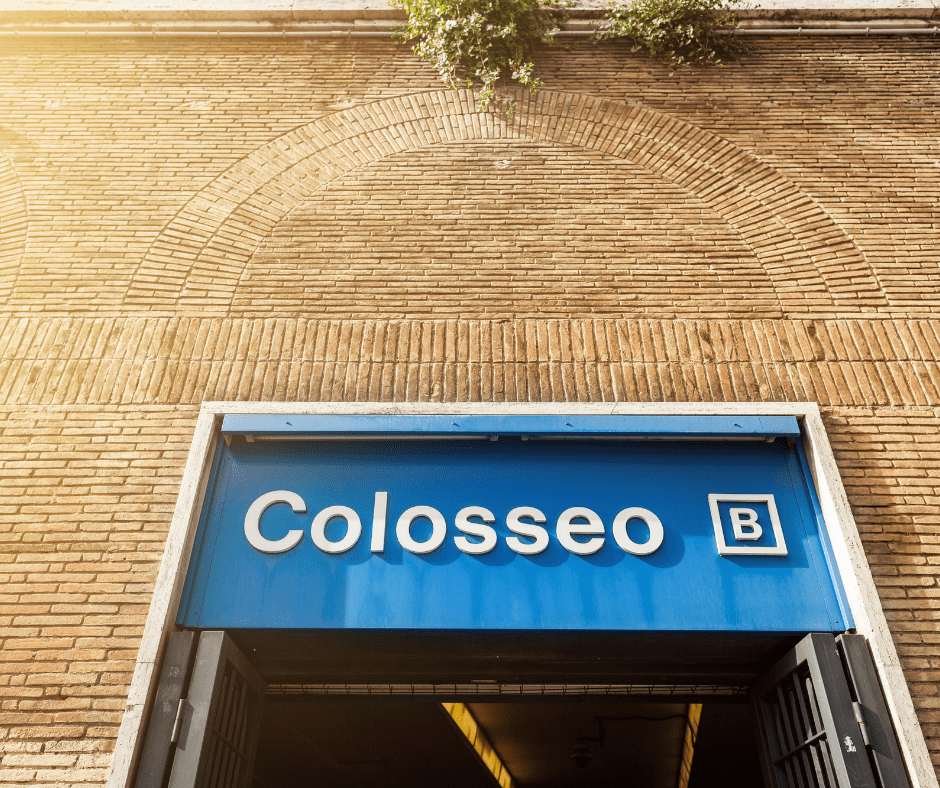
The Colosseum and Roman Forum sit at the center of Rome’s historic district, making them easily accessible by foot, metro, and bus.
- By Metro:
The Colosseo stop on Metro Line B drops you right outside the Colosseum’s entrance—perfect for direct access. - By Bus:
Several bus routes stop at Piazza del Colosseo and Via dei Fori Imperiali, including lines 51, 75, 85, 87, and 118. - On Foot:
If you’re staying in central Rome, it’s a pleasant walk to reach the Colosseum and Forum from neighborhoods like Monti, Campo de’ Fiori, or Piazza Venezia. - By Taxi:
Taxis can drop you near the entrances but beware of heavy traffic during peak hours
💡 Experience Tip: Purchase a Roma Pass for free use of the city’s public transport network, as well as various benefits and discounts.
Where to Eat Near the Colosseum and Roman Forum
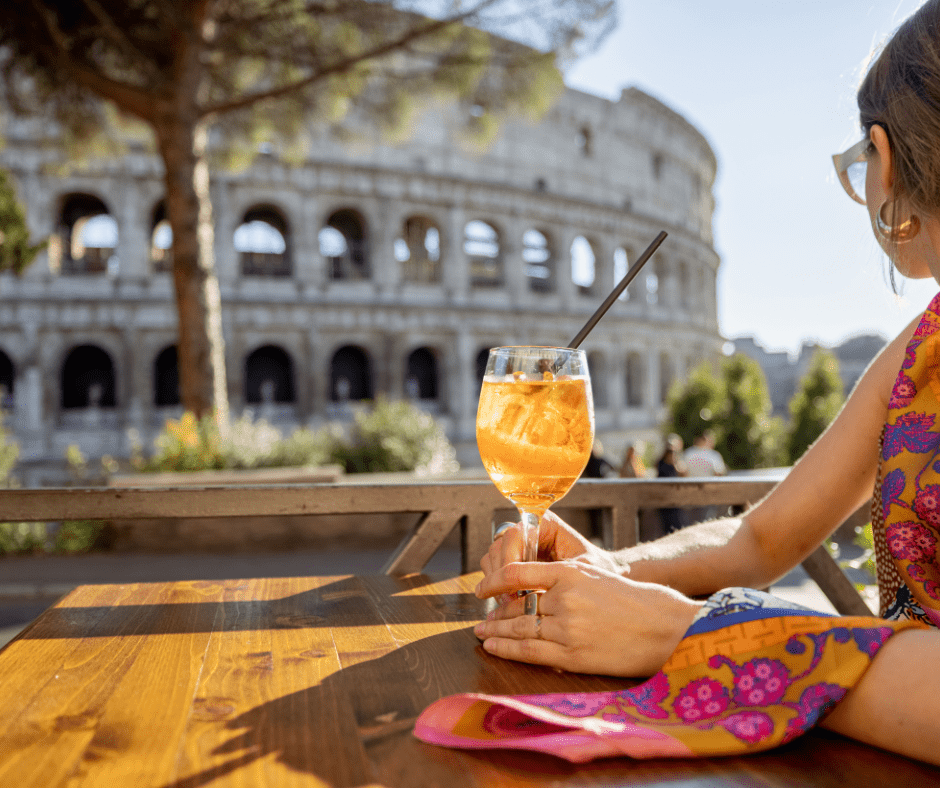
After exploring Rome’s ancient ruins, you’ll be ready for a great meal – and this part of the city offers plenty of options, from casual trattorias to stylish cafes.
Here are a few standout spots nearby:
Taverna dei Fori Imperiali
Family-run with a warm atmosphere, this trattoria serves beloved Roman classics like cacio e pepe and amatriciana just steps from the Forum.
La Carbonara Monti
A cozy local favorite offering authentic Roman pastas in the charming Monti district—ideal for a relaxed lunch after sightseeing.
Caffè Propaganda
An elegant yet casual café near the Colosseum, perfect for coffee, cocktails, or a light meal with a modern twist on Roman cuisine.
Li Rioni a Santiquattro
A laid-back pizzeria just a few minutes from the Colosseum, known for thin-crust Roman pizza and friendly service.
Trattoria Luzzi
An affordable and bustling spot close to the Colosseum, offering hearty Roman dishes in a no-frills setting popular with locals and tourists alike.
Opio Café
A stylish spot right near the Colosseum, perfect for coffee, light lunches, or a casual aperitivo with views of the ancient ruins.
Tips for Visiting
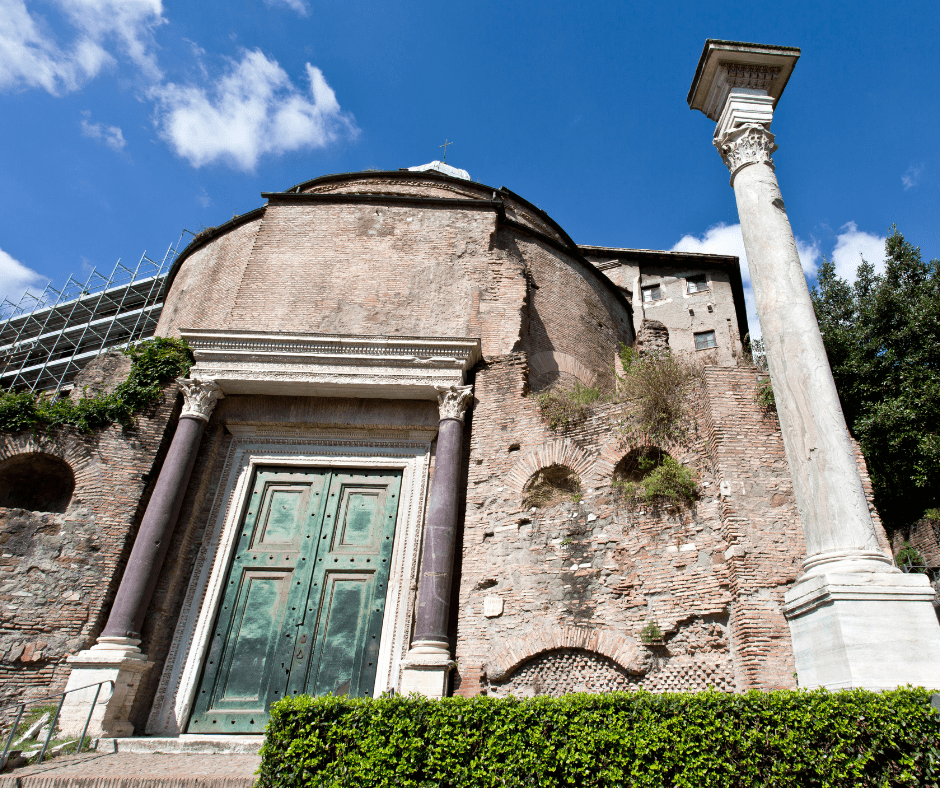
- Wear comfortable shoes. The Forum and Palatine are filled with cobblestones and uneven paths.
- Bring water and sun protection. There’s little shade and lots of walking.
- Restrooms are limited. Use facilities at the Colosseum before entering the Forum.
- If you plan to visit several museums and archaeological sites during your stay, consider purchasing a Roma Pass or Omnia Vatican & Rome Card. Both offer free or discounted entry, skip-the-line access, and public transport benefits.
- Security screening is required. Arrive 15–30 minutes before your timed entry.
- Consider a guided tour. It’s the best way to skip lines and gain valuable context, learn the stories behind the ruins.
- Allow 3-4 hours minimum to explore all three areas at a relaxed pace. .
- Nearby bonus: Consider pairing your visit with the Capitoline Museums for even more Roman history.
📸 Pro Tip: The best time to visit is early morning for cooler temperatures and smaller crowds. Unless you’re visiting in early spring or late fall, late afternoon can be hot—sometimes unbearably so—and the Forum is fully exposed to the sun.
💡 Planning your trip around the seasons?
Read our guide: Best Time to Visit Italy for insights on when to go for great weather, fewer crowds, and special events.
FAQ
What is the difference between the Colosseum and Roman Forum?
The Colosseum was an amphitheater used for gladiator games and public spectacles, while the Roman Forum was the civic heart of ancient Rome, hosting political meetings, religious ceremonies, and markets.
How long does it take to visit the Colosseum and Roman Forum?
Plan at least 3–4 hours for a combined visit, including time to explore Palatine Hill. A guided tour may extend this slightly but provides valuable historical context.
Can you visit the Roman Forum and Colosseum on the same ticket?
Yes. A standard combo ticket gives access to the Colosseum, Roman Forum, and Palatine Hill, and is valid for 24 hours from first entry.
Do I need to book Colosseum tickets in advance?
Advance booking is strongly recommended, especially during peak tourist season, as entry is timed and daily visitor numbers are limited.
Is it worth taking a guided tour of the Colosseum and Roman Forum?
Yes! A guided tour allows you to skip long entry lines and provides essential historical context, helping you understand what you’re seeing.
Without a guide, much of the site can feel like “just stones” unless you’ve done lots of research beforehand.
Is the Colosseum accessible for visitors with mobility challenges?
The Colosseum offers elevators and accessible routes, but the Roman Forum and Palatine Hill have uneven terrain that may be difficult to navigate.
What’s the best time of day to visit the Colosseum and Forum?
Early morning or late afternoon is best for smaller crowds and softer lighting for photos. The late afternoon “golden hour” gives the Colosseum a beautiful glow.
Embrace Ancient Rome: Your Journey Begins
Slow down. Look closer. Feel the worn grooves in the stones where countless Roman footsteps once passed. Every stone has a story—and now, your own story becomes part of this ancient place.
Hi, I’m Jack Baumann – founder of Guidester. I’ve spent over 15 years living and traveling throughout Europe, and I created Guidester in 2014 to help others experience the best of what Europe has to offer. What started as a passion project has grown into a full-service travel concierge and tour company, designed to make your journey smoother, richer, and more meaningful.
Want to know more about my story? Click here to learn more about me.
👇Don’t forget to grab your free international travel checklist just below – it’s packed with essentials to help you feel fully prepared for your next adventure!
Jack Baumann
President of Guidester

The Ultimate Pre-Travel Checklist
Download ‘10 Crucial Things To Do Before Traveling Abroad’ to avoid mistakes and ensure a smooth trip; adapters and electronics, packing tips, foreign currency, phone plans, and more!

